How to start a snow blower?

Snow throwers are specially designed to work stably at low ambient temperatures. Such equipment rarely has breakdowns, but most of them are associated with improper start-up, when it turns out that the unit does not go in the cold in the cold.
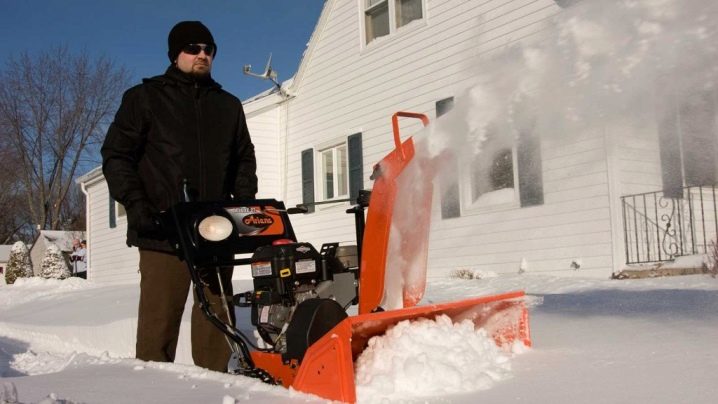
How to properly start the electric starter?
The electric starter is a small button located on the snow blower control panel. Its advantage is that the user does not need to perform additional actions to activate the motor - you just need to press the start.

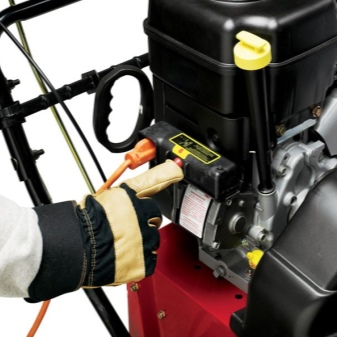
The process looks like this:
- the user at the very beginning must put the fuel lever in the desired position, that is, open the fuel supply valve;
- on the upper half of the spark plug there is a cap from the electrical wire, which must be fixed in a stationary state;
- the lever responsible for the position of the throttle flap is moved to the closed position, that is, it must be pushed all the way to the right;
- the position of the trigger lever is now changed from closed to open;
- to manually pump fuel, the user must press the pump several times;
- now you can press the starter button, but do not release it immediately, but hold it until the engine starts (the holding time is about ten seconds, it is no longer required, and if nothing worked out, they wait a minute and start again);
- after the engine starts to run stably, the throttle lever is moved to the open position.
The engine should warm up a little before cleaning the area. On average, this takes five to seven minutes.
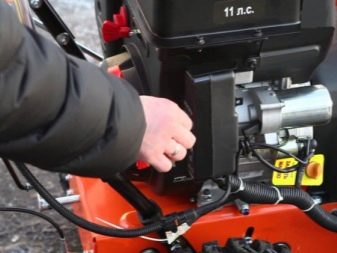
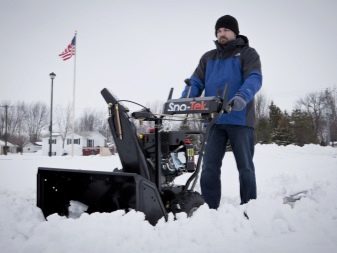
Features of the manual method
When starting the recoil starter also the user a number of requirements must be met:
- before starting the start, the operator must check the oil level, only after that the auger and wheels locking levers are lowered;
- the lever responsible for fuel supply is moved to the open position;
- as in the previous case, the cap from the electric wire is securely fixed;
- the throttle valve must be closed, therefore, check the position of the lever responsible for its position;
- the starting switch is moved to the "On" position;
- fuel is pumped up manually, for this they press the corresponding button several times, after which the starter cable is pulled towards itself until resistance becomes noticeable, now you can pull it sharply to get the engine to work;
- the throttle valve opens.
And in this case, the motor must warm up before the user starts to operate the equipment. If the established requirements are not met, then an additional load will be applied to the engine, which will negatively affect further performance.

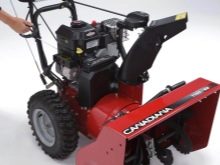

What to do if the equipment stalls?
Sometimes the user is faced with the following problem: after the snow blower has started, it stalls after a few minutes. There are several reasons that can cause these problems:
- the fuel is not being supplied correctly;
- there is no necessary air supply;
- flooded spark plugs.
Experts advise regularly checking the stability of the fuel system, since without a high-quality fuel supply, there is no question of any stable operation.You can do this yourself - just remove the protective cover and look at the hoses and filters. When cracks and holes appear, air bubbles come along with the fuel. They are the first reason the engine stalls.

At the joints with the fittings, the tubes must be properly fixed. It is best to treat it with a sealant here to exclude the possibility of air ingress.
If there are no problems with the fuel supply system, all user's attention should be paid to the filters. A high-quality oxygen flow is required not only for the cooling system, since it is an indispensable component in the composition of the fuel mixture. Replacing or cleaning the filter may help correct the problem.
Spark plugs are a part that causes problems with starting the engine just as often.
It is not advised to use a large amount of lubricant, since it is she who fills the spark plugs, which subsequently are no longer able to create a spark.
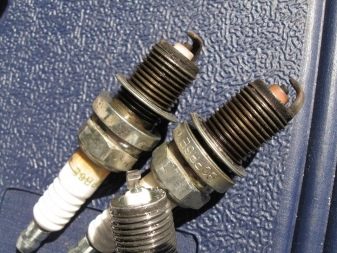

What breakdowns can cause engine failure?
There are other breakdowns that make it impossible to start the engine in winter. Among them, the following stand out:
- gasoline that was not drained from the tank for the summer;
- the throttle valve is in the wrong position;
- cheap engine oil is used;
- the carburetor does not work;
- problem with the ignition system.
Gasoline that remains in the fuel tank after several months of inactivity is no longer usable and therefore the snow blower will not work on it. The octane number drops, all the necessary additives evaporate. The problem is solved very simply: you need to change the fuel, for which you drain the old one and fill in the new one.
Each starting instruction indicates in which position the throttle valve should be located. If this condition is not met by the user, then it is also impossible to get work from the motor, since there is no required air flow. Even if the equipment starts, the engine breakdown is not far off, since it begins to experience a load several times higher.
In this particular case, the user simply has to keep an eye on the position of the lever.
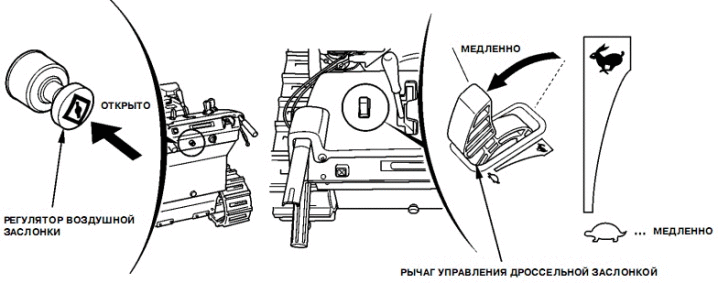
Poor quality oil is also the reason that the engine not only does not start, but can also fail. As a result, expensive repairs will be required in the future, since the main elements work with a high frictional force, and they simply wear off without lubrication.
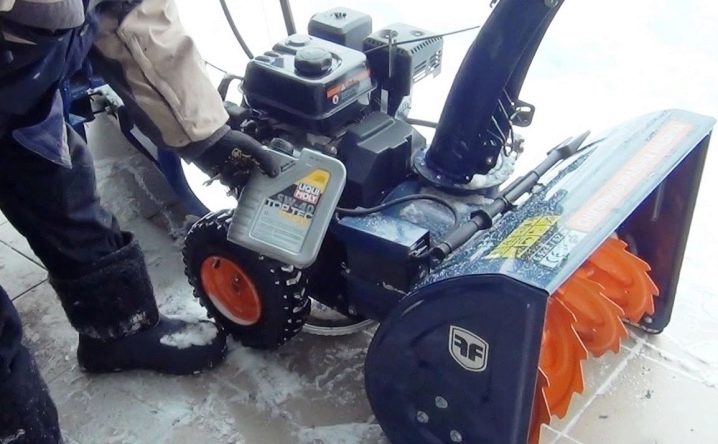
If none of the above is observed, then you should check the contacts. A break in the wiring or an incorrect gap at the coil leads to the lack of the necessary spark, respectively, the ignition of the combustible mixture also does not occur.

We must not forget about the carburetor - one of the most important components of the design of a snow blower. He is responsible for the supply and preparation of the combustible mixture. It is regularly required to clean the unit from carbon deposits, to prevent dust accumulation in it.

For information on how to properly start the snow blower, see below.



































































The comment was sent successfully.